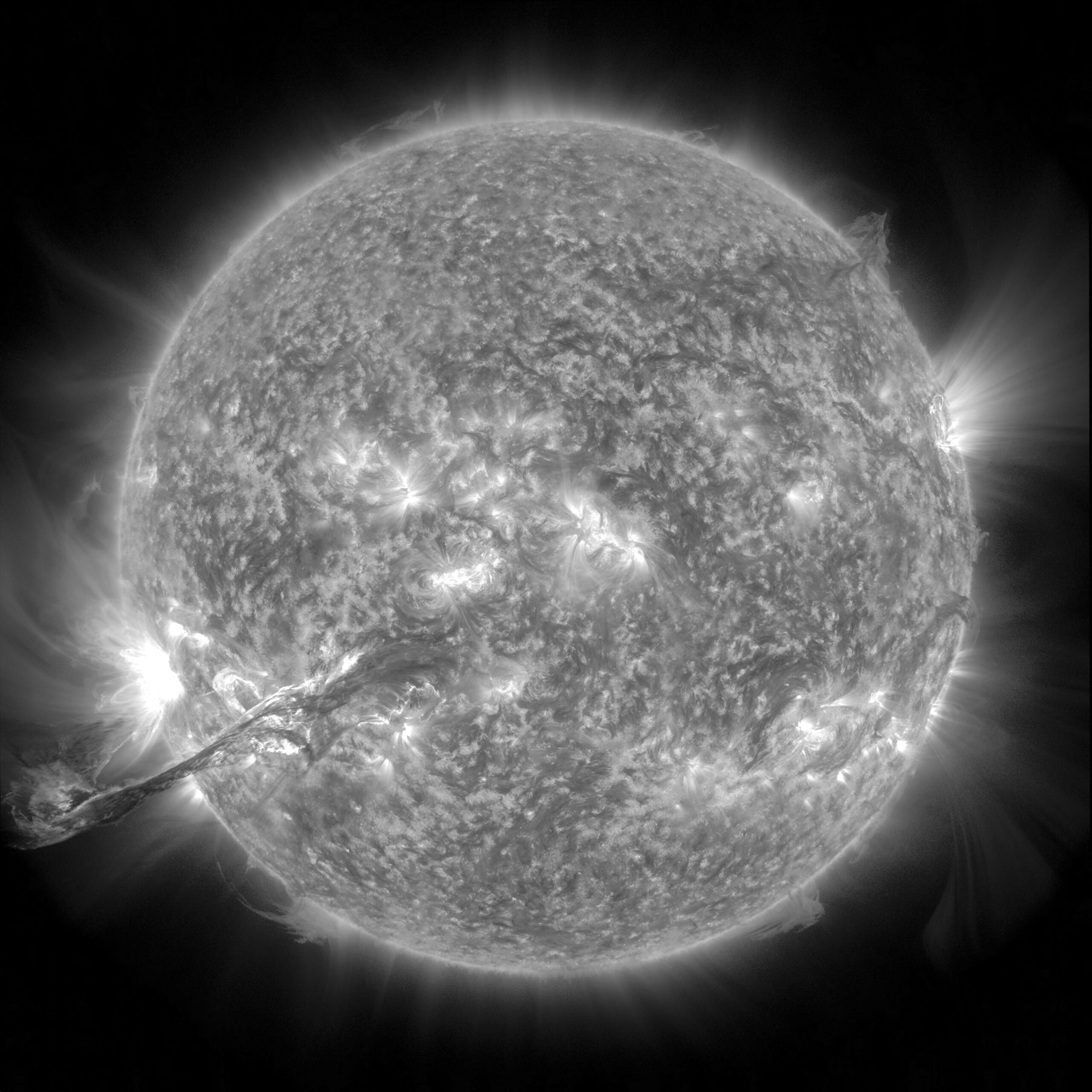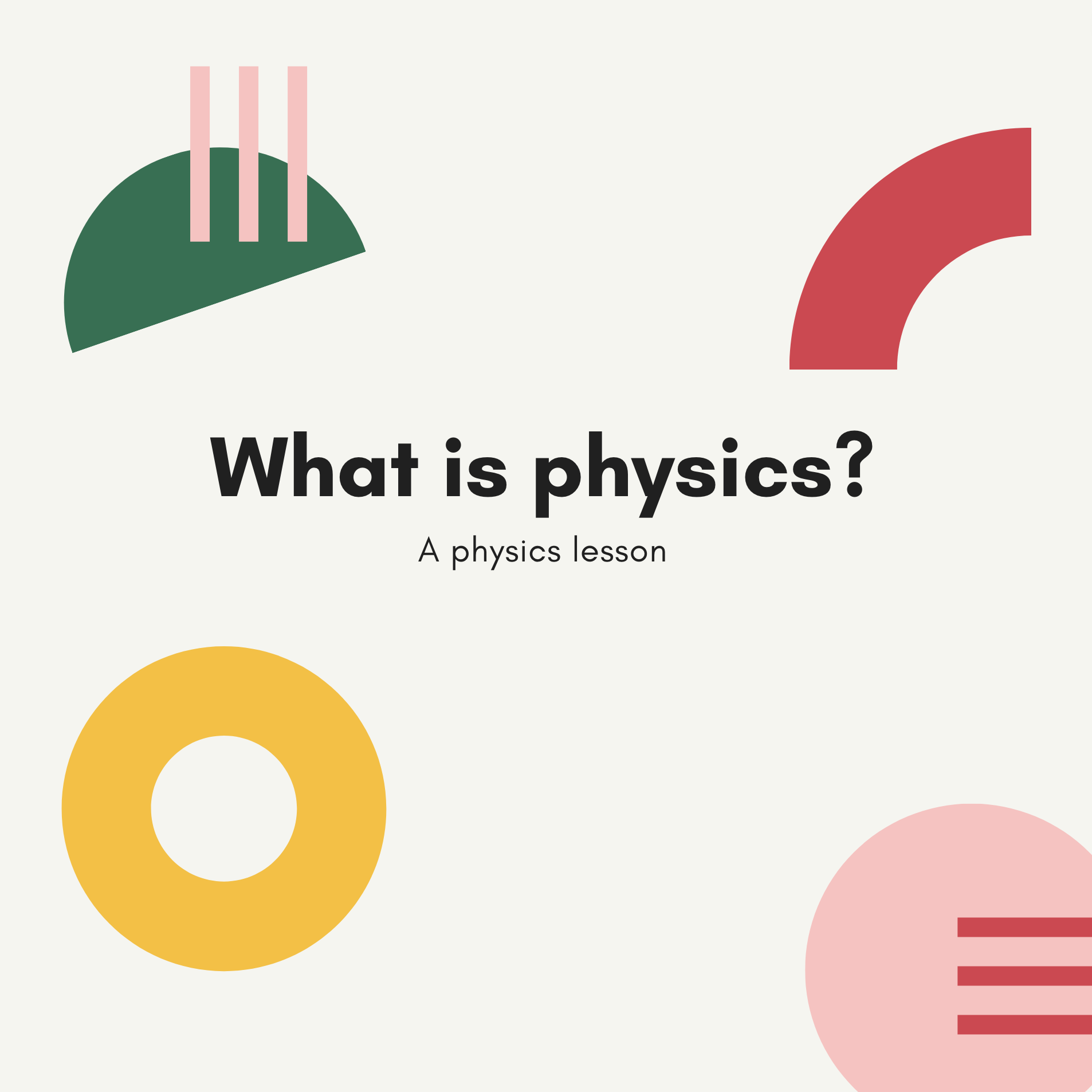Our whole world was revolutionized with the discovery of the atom. When John Dalton proposed the atom’s existence in the early 19th century, a new door to physics was opened. We began peering into the atom, what it was made of, the electrons, protons, neutrons, and the constituents of these subatomic particles: quarks and gluons. Scientists of the time discovered that the atom had a nucleus and an electron cloud. Today, we can change atoms, we know that some are radioactive, and they convert from one element into another, forever trying to reach a calm state of being. We discovered a whole new world!
In this series, we are tackling the nucleus of the atom, or nuclear physics, a branch of physics that tries to investigate the secrets of the nucleus.
We begin with part 1: the discovery of the atom, the nucleus, the properties of the subatomic particles, and the structure and stability of the nucleus. Part 2 will discuss everything related to radioactivity and radiation, half-lives, and nuclear reactions like fission and fusion. We will also discuss exciting particles called neutrinos!
Everything begins and ends here. Our world began with the nucleus: the universe’s atoms arose from nuclei in a sea of particles. Our civilization’s ultimate demise could be from splitting the nucleus — the end at the beginning.
The discovery of the atom
So, we all know what atoms look like now, right? There have been many models for atoms in the past, starting from ancient Greece, when Democritus described the atom as an indivisible particle of which everything around us is made of. While this was just speculation, he was proven to be on the correct path many years later.
The plum pudding model
Then, John Dalton proposed the atom’s existence based on his experiments with gasses. He discovered that different types of atoms exist and make up compounds we can find in everyday life.
After establishing the atom’s existence in the 19th century, physicist J.J. Thompson discovered the electron using cathode rays (More about electrons and their role in physics and chemistry in another post). He formed the plum-pudding model,

which is basically just electrons floating around in a positively charged sphere.
The famous gold foil experiment
Soon after the electrifying discovery, scientist Ernest Rutherford completed his famous gold foil experiment. He set up a source of alpha particles (more about them in part 2) to shoot them toward a very thin sheet of gold foil. Around the gold foil, a circular fluorescent sheet was placed so the alpha particles would be visible when they hit the screen. When the particles were shot through the gold foil, some veered off at extreme angles. This showed that the atoms inside the gold foil contained positively charged nuclei (since alpha particles were known to be positively charged). And just like that, the nucleus was discovered.

The alpha particles didn’t all end up directly behind the entry point to the gold foil because of positively charged nuclei in the atoms! We know that alpha particles are positively charged. When interacting with a positively charged nucleus, the opposite charges repel each other. Suppose the alpha particle comes in close enough contact with the nucleus. In that case, the high charge of the nucleus furiously repels the alpha particle, causing it to deflect at very large angles.

What was the nucleus made of?
But it wasn’t known that the nucleus contained protons and neutrons. Since neutrons weren’t discovered, scientists first thought it was made of protons and electrons. This soon proved wrong when the nucleus’s supposed spin (more about spin in a future article) didn’t match experiments, and the nucleus was too heavy to be made of protons and electrons. Thus, we found a heavy particle with no charge: neutrons.
So, the nucleus was made of protons and neutrons and was super dense compared to the size of the atom. However, it wasn’t known why electrons didn’t collapse towards the nucleus. It seems logical, right? The positive charge of the protons in the nucleus is attracted to the negative charge of the electrons orbiting the nucleus. And yet, atoms exist. This is because of some super weird properties of electrons in the realm of quantum mechanics (which deserve a special post).
The planetary model
Neils Bohr came in in 1913 with his planetary model of the atom. He proposed that electrons orbit the nucleus in shells. Each shell is in a specific layer around the nucleus and can contain electrons of certain energy levels and different spins. The further away the electron is from the nucleus, the more energy it has, and vice versa. While this model was very successful then, the more we learned about the atom and mainly electrons, the more inconsistencies were found, which had to be fixed.

As of our most recent knowledge, our understanding of electron behavior has changed. We realized that an electron’s path can’t be strictly defined around the nucleus, only the probability of where the electron is. This is why we have electron clouds instead of distinctly defined “paths” of electrons.
Properties of subatomic particles
Contrary to popular belief, not all subatomic particles are stable.
Contrary to popular belief, not all subatomic particles are stable.
Electrons are leptons, particles that aren’t influenced by strong interactions. In other words, they aren’t affected by the strong force. They are very stable, too. They can’t break down since they aren’t made up of any other particle.
The nucleons
Protons are made of 3 quarks: 2 up quarks and one down quark, tightly bound together by gluons (more about them later). Quarks are indivisible particles with a slight charge and come in different flavors! They can be up, down, charm, strange, top and bottom. And even though the names sound weird, the only differences between these types are the mass and charge. Only up and down quarks are found in ordinary matter. In contrast, the rest of the quarks are produced in very high-energy collisions and last a very short time. Since they are so small, it is hard to conduct research with them, which is ongoing.
As of our current understanding, protons are either very stable particles or have an extremely long half-life. (more about that in part 2).
Meanwhile, neutrons are made of 2 down quarks and one up quark. And they are unstable in the long term!

When neutrons find themselves in the nuclei of atoms, they are stable because the gluons keep the quarks in the same flavor. Gluons are massless particles and carriers of the strong force. They keep protons and neutrons tightly bound. However, nothing retains the quarks from changing flavors if a neutron is isolated!
So, one of the down quarks in a neutron turns into an up quark, mediated by a boson. This particle mediates the weak force responsible for quark behavior. This boson is quite unstable and quickly decays into an electron and an antineutrino (more about neutrinos in part 2). The neutron transforms into a proton with the electron and the antineutrino released.

Since neutrons aren’t the most stable creatures (along with protons on some occasions), does that mean the nuclei fall apart?
Stability and structure of the atomic nucleus
The central premise of radioactivity and radiation is that the nucleus of our atoms is unstable (more about that in part 2). So, how are nuclei structured, and what keeps them stable?
The nucleus contains neutrons, which have no charge, and protons, which have a positive charge. Due to charge, protons will repel each other furiously, meaning the atom cannot exist! And yet, it does. How come?
Neutron vs. proton ratio inside the nucleus
The neutrons act as guards for the protons, essentially keeping them in check from falling apart. The strong nuclear force is an attractive force that is extremely strong, much more than the electromagnetic force, which enables the “opposite charges repel” law. However, the larger the nucleus, the more neutrons are required to keep the protons from repelling each other too far since there are more and more of them.
After a while, the ratio of neutrons vs. protons isn’t 1:1 anymore since more neutrons are required to keep things in balance. The graph below shows the stability strip or the strip of atoms where the ratio is good enough for the nucleus to stay stable. Too many neutrons, too few neutrons vs. protons, or simply too many neutrons and protons can lead to instability.
All atoms above proton number 83 are unstable and radioactive.

Binding energy
Another factor that keeps things together is binding energy. This is the energy necessary to keep the nucleus bonded together. The more protons and neutrons in the nucleus, the higher the binding energy until a certain point. Afterward, the energy starts declining, meaning it is easier to break the bond. This is why very heavy atoms are more unstable. The following graph depicts the bonding energy of atoms:

Why does the graph start decreasing after nickel? Because the more nucleons (protons and neutrons) there are, the larger the atom’s radius. Since the radius increases, the strength of the strong force begins to dwindle because it acts only on minimal distances. As the force weakens, keeping the straggling nucleons at the boundary of the nucleus bound becomes harder.
An interesting fact about binding energy is that if we take the individual masses of all the protons and neutrons in the nucleus, add them together, and compare that sum to the actual experimental mass of the nucleus, we see that they aren’t the same!
The sum is greater than the actual mass! How is this possible? Due to Einstein’s equation, E=mc², mass and energy are interchangeable. So, part of the masses of the nucleons are converted into energy, which keeps everything together.
So, how is the nucleus structured so that binding energy works out? There are 2 famous models: the liquid drop model and the shell model.
Liquid drop model of the nucleus
This model infers that all nuclei are of approximately the same density (which makes intuitive sense) and that every nucleon in the nucleus is kind of like a “drop of liquid.” The whole nucleus is like a liquid, so we can define the individual nucleons as liquid particles in liquid matter. This model can estimate a nucleus’s total bonding energy and accounts for processes like nuclear fission.
Shell model of the nucleus
This model says the nucleus is like the electron cloud: it contains shells of differing energy levels where protons and neutrons can be with different spins, based on the Pauli exclusion principle. This principle states that no two particles can be in the same state in the same space (orbital or shell). So, in each shell of our nucleus, protons and neutrons cannot be in the same state, meaning they can’t have the same spin.How does this work?
As scientists observed many, many different isotopes of elements, they noticed something very curious. If nuclei had even numbers of both protons and neutrons, they would be much more stable than even-odd, odd-even, and especially odd-odd combinations. A possible reason for this even-even preference might be because the strong force prefers pairs of neutrons and protons! This means that they are bonded tighter and, hence, more stable.
So, this means the nucleus has some structure, doesn’t it? If things are this ordered? A Polish-American scientist, Maria Goeppert-Mayer, created the shell model, which says that the nucleus is composed and contains shells where nucleons reside. Sometimes, isotopes are exceptionally stable or common if they have the following magic numbers of nucleons in the nucleus: 2, 8, 20, 50, 82, and 126.
In reality, neither model is absolutely correct, and we use a combination of both models for our calculations.
Summary of nuclear stability
Now that we know about all the components of nuclear stability, let’s put it all together. Nucleons are kept together by the strong force, which grows weaker the larger the nuclei become. It battles against the formidable electromagnetic force, pushing the protons away from each other due to their charge. However, neutrons help out the strong force, keeping the protons at bay. But, sometimes, there might be too little help (too few neutrons), the nucleus collapses, or too much help (too many neutrons), and everything falls into chaos. And sometimes, there is simply too much to take care of, and the strong force must admit defeat.
However, there are magical times when things work out great. There are magic numbers of nucleons in the nucleus shells, keeping it more stable than ever. But, no 2 nucleons are allowed to have the same intrinsic spin, so they must differ between every shell of the nucleus. The binding energy is the last component in the war of the nucleus. It takes away from the nucleons, converting their mass into energy and keeping them bonded. But, its powers are not infinite, and beyond a certain point, too much is too much, and the binding energy starts to decline. These factors work night and day to keep the atom together and the whole universe alive.
But what happens when this war is lost? When all the forces that attempt to keep the atom in check give in, and instability reigns the atomic nucleus? Well, a little something called radioactive decay comes in after the war is lost. More about that in part two…
PS. Link to part 2 coming soon!
REFRENCES
- Chemistry The Central Science by Theodore L. Brown H. Eugene LeMay Jr Bruce E. Bursten Catherine J. Murphy Patrick Woodward Matthew E. Stoltzfus, Pearson, 14th edition, chapter 21 on Nuclear Chemistry
- Understanding physics Volume 3 by Isaac Asimov, Barnes&Noble books, 1996, chapters 7, 8, 9, 11
- University Physics with Modern Physics by Hugh D. Young, Roger A. Freedman, A. Lewis Ford, Pearson, 15th edition, chapter 43
- https://www.youtube.com/watch?v=lUhJL7o6_cA
- Photo by NASA on Unsplash -> cover photo





